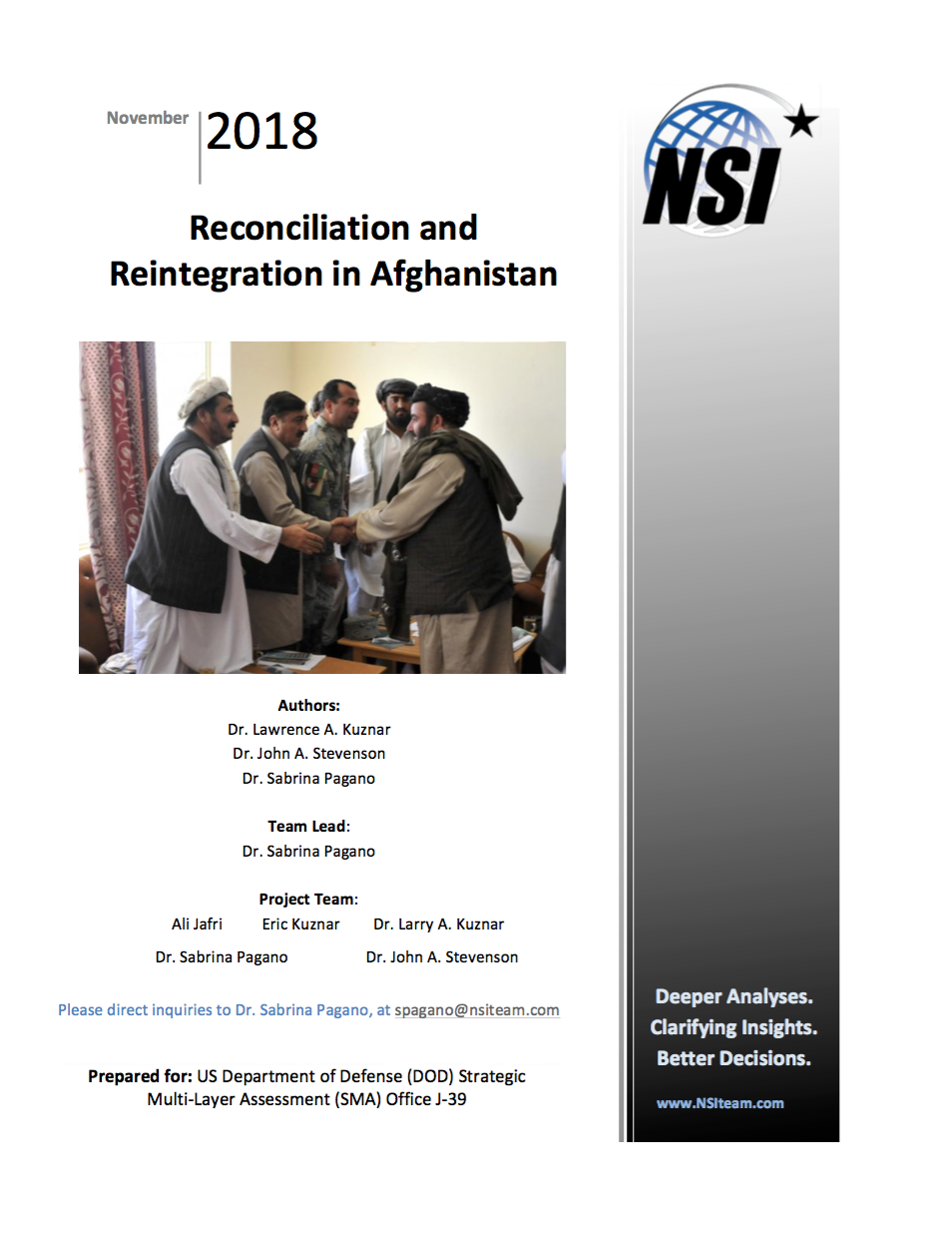Reconciliation and Reintegration in Afghanistan
Reconciliation and Reintegration in Afghanistan
Contributors: Kuznar, L., Stevenson, J., Polansky (Pagano), S., Jafri, A., & Kuznar, E. (NSI, Inc.)
Executive Summary
This report provides an analysis of the compatibility of reconciliation and reintegration processes, an assessment of the potential for achieving successful reconciliation and reintegration in Afghanistan, and an examination of which US government capabilities can best be leveraged in support of these processes.
Reconciliation involves creating an overarching framework for peace. Reintegration establishes the underlying framework for the end of conflict and describes the processes by which fighters re-join society and armed groups cease using violence without government authorization.
Adaptation and application of the NSI PathwaysTM Model approach enabled identification of a set of drivers of—and barriers to—reconciliation and reintegration through “top-down” theoretical work and “bottom-up” empirical case studies. This initial set gave rise to a generic model of reconciliation and reintegration, the components of which could then be classified as being affective, cognitive, or behavioral, as well as social, economic, or political in nature. The generic model was then applied to the case of Afghanistan, revealing three major insights about reconciliation and reintegration:
• There is complete overlap between reconciliation and reintegration objectives in Afghanistan, suggesting that reintegration can be pursued in Afghanistan without undermining or prohibiting reconciliation.
• Afghanistan is characterized by a marked lack of drivers of, and an abundance of barriers to, reconciliation and reintegration in Afghanistan.1 This is true both overall and compared with four historical cases. Moreover, virtually all of the required social, political, and economic components (as well as affective, cognitive, and behavioral) required for reconciliation and reintegration are absent.
• Despite a bleak prognosis, the USG is not powerless to influence reconciliation and reintegration in Afghanistan. Additional consultation of the DIMEFIL framework and doctrinal sources2 suggests actions that can mitigate barriers and support drivers, including: information operations, key leader engagement, and aiding the host nation (e.g., through intel, air, and ground support; military police; etc.). Key partnerships might include those with the host nation, local civil organizations, UN peacekeeping forces, NATO allies, NGOs, and a variety of organizations, departments, and offices within the USG. The latter include the Departments of State and Justice, USAID, the intelligence community, the Drug Enforcement Agency, the Federal Bureau of Investigations, and Health and Human Services.

Comments